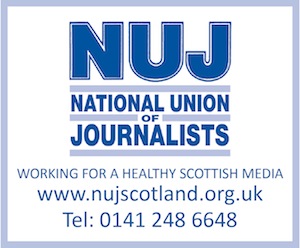ON Tuesday, The Scotsman newspaper launched a brand, new look, primarily designed by Pamplona, Spain-based Errea Communication.
Here, Javier Errea explains the thinking behind it…
What exactly was the brief?
When we were first contacted, The Scotsman had just conducted a deep research among readers. They noticed that readers and Scottish people in general were demanding a new approach to the news, a more appealing and sophisticated newspaper to better serve a new country.
What first struck you about the job?
I have long-admired The Scotsman since it was a fantastic broadsheet, prestige daily. I used to collect its front pages and coverage, to show at different lectures and classes. So, it was an honour to be asked participate. But we knew it would be a short timescale.
Describe the process from conception to completion.
We have been working with The Scotsman for the last five months and it culminated in three options being presented, ranging from the conservative to the radical. They chose the middle one.
Pantone numbers, fonts, use of space, kit, etc?
We have tried to offer a new fresh look for a prestige newspaper facing new times both in the industry and in the country. A look more appealing to urban, sophisticated audiences – in print and in digital. It was crucial to keep the spirit of the paper, to recognise its history and traditions.
All typefaces were changed. Not one from the old library remained. We decided to use Sueca: a fantastic, wide, legible, and elegant serif font made by Portuguese, Mario Feliciano. Sueca Text for body text, Sueca Banner and Headline for headlines, decks, etc.
Sueca was commissioned first by Feliciano for Svenska Dagbladet, a daily based in Stockholm. In my humble opinion, it is one of the best fonts in the world for newspapers; neutral enough, but incredibly legible and elegant. And very versatile.
Along with Sueca, we used Calibre – by New Zealand’s Kris Sowersby – for text boxes, charts and tables, some headers, navigation, etc.
Expressive touches are provided by Brunel Poster Italic, by Christian Schwartz. It is just used in headers.
Our suggestions for the masthead was again presented as a series of options and the one chosen – all black – we believe to be bold and strong, plus proportional to the front page format.
The Scotsman has now a wide range of fact boxes library including displays for bullets, key points, figures, tables, quotes, polls, etc.
In addition, we tried to input contrast and expression so that hard news headlines are clearly different from features, interviews, etc. Sub-heads are now more important than before. I insisted on this, as sub-heads are the main entry points to any story.
A newspaper’s colour palette is a vital tool for navigation, both in digital and print. We went for a ‘more happy’ palette compared to the blue previous one. It was like opening the window and letting in fresh air.
You can see now a light turquoise blue for news, light strawberry for the opinion pages, a kind of dark yellow and turquoise for business, calm aubergine for obituaries and reviews, magenta for television and orange for sports. Purple is the complementary colour everywhere and plain yellow works as a ‘post-it’ colour.
Contrast and rhythm are key points now. The idea was not to have a flat pagination but different peaks and clearly-signalled transitions.
As for the front page, many different solutions and structures were provided – based on a new, multi-column grid. It is always a challenge getting the architecture current for a front page.
What most excited you about the project and what pleases you the most about the finished article?
As I said, I was excited by the responsibility given by a well-known brand such as The Scotsman.
It was a fantastic opportunity to renew my relationship with quality journalism, especially nowadays when pessimism invades everything across the industry.
The result, and this is my humble opinion, is a fresh, modern-classic newspaper.
That may sound like a contradiction, but it is not. The new The Scotsman reflects the importance of reading in-depth reporting and editing, along with new tools available for new audiences.
Any particular inspirations from your past that have shaped you and your work?
The rich tradition from The Scotsman itself led us all the time.
Been impressed recently by someone else’s work?
We are learning all the time. Of course we follow other media and other colleagues’ work.
I love Politiken in Denmark, in print. I love De Morgen, in Belgium. Also in print.
From the digital side, I am proud of some of our recent projects, but I could refer to The New York Times or Los Angeles Times as two really good proposals.
You can’t ignore other, new digital media – such as Quartz, for instance – but I am currently more interested in strong traditional news brands.





